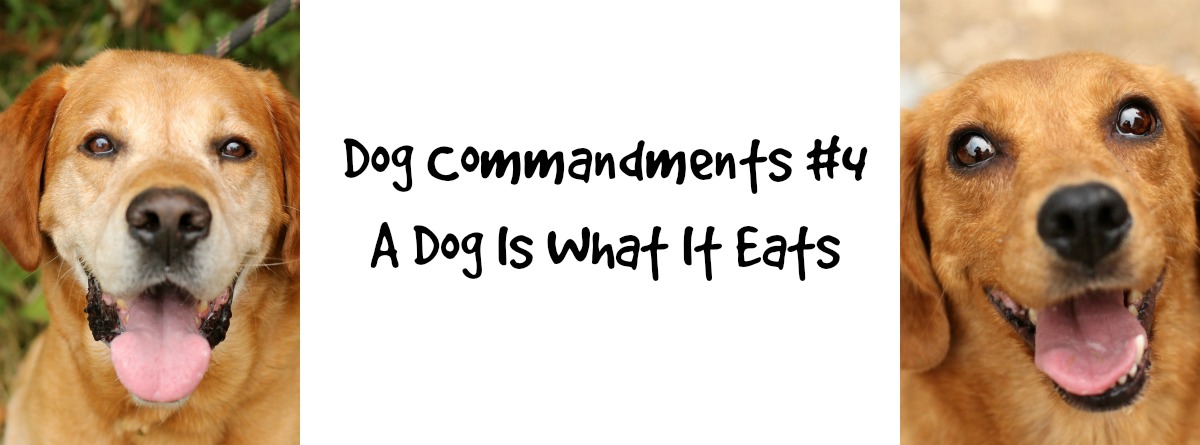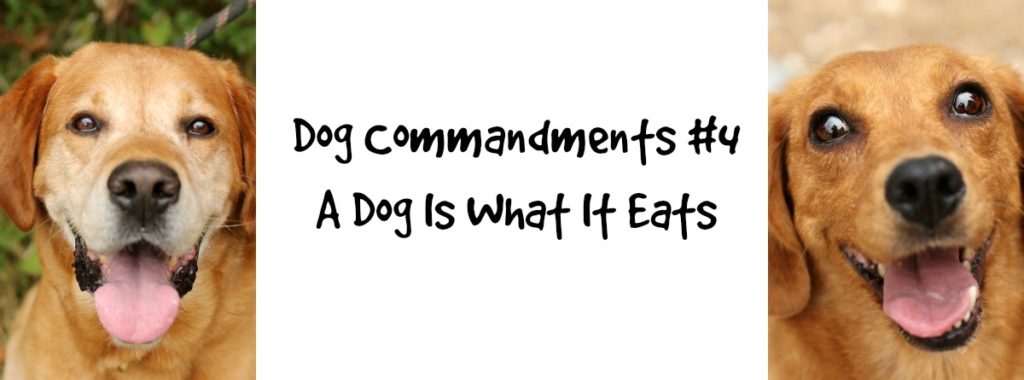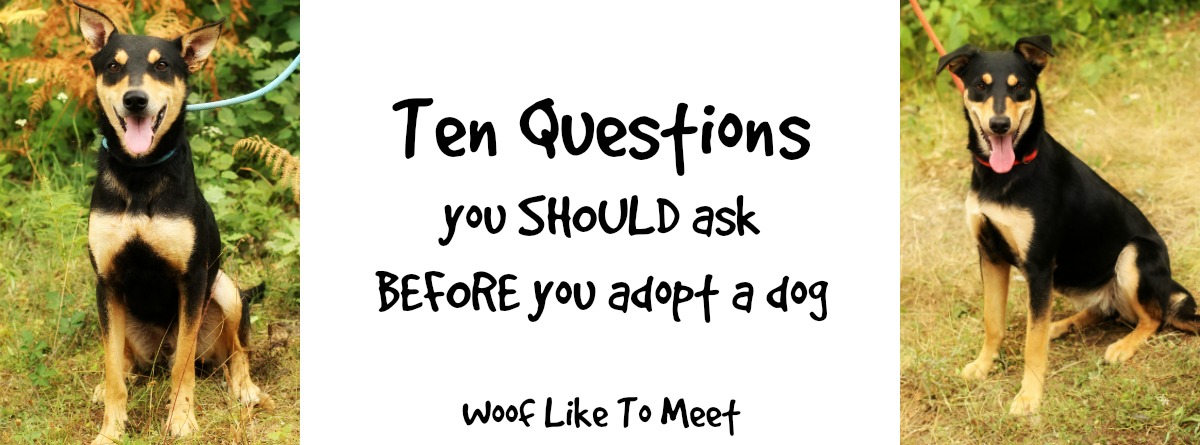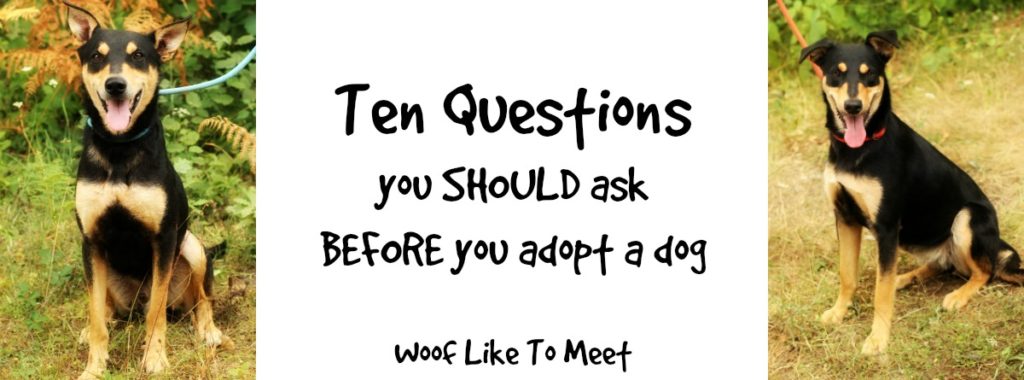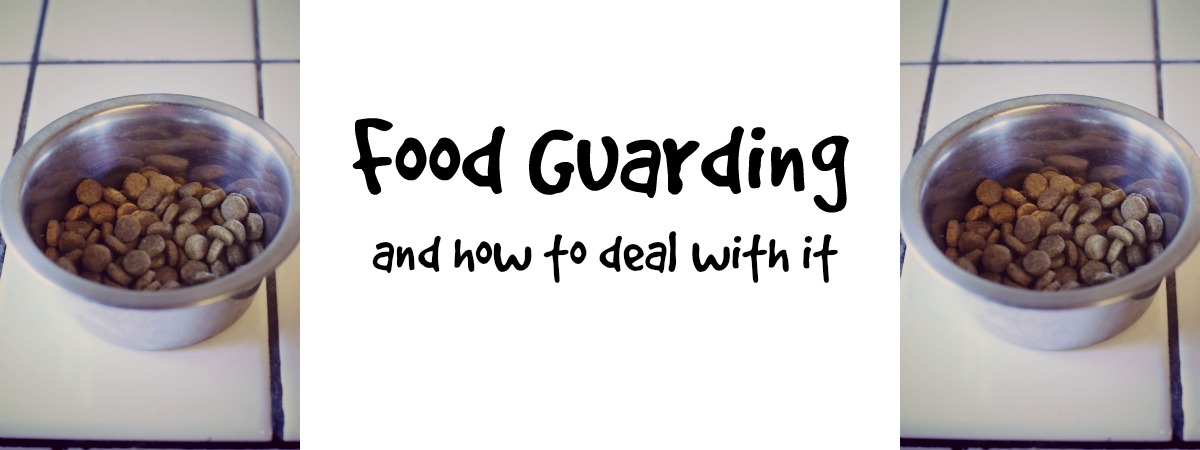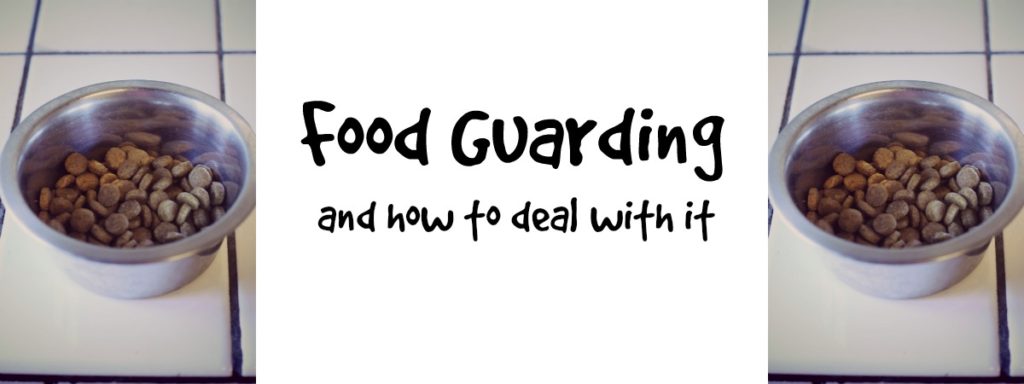A dog is very much a Return on Investment product: what you invest, you get back. That’s as true of food as it is of many other things.
This week, I’ve been reading Canine Nutrigenomics by Jean Dodds and Diana Laverdure-Dunetz. It’s a book which explores what things are good for your dog to eat, and what is not so good. The best thing about it is that it doesn’t make you feel guilty if you are feeding your dog a raw diet, a biscuit diet or a cooked diet, and has ways that you can improve your dog’s health whatever you feed them. It’s a brilliant book, scientific but not science-speak. If you are still deciding about what sort of diet you want to feed your dog, then you also might want to check out a website like Pet Food Exposed.
When I did a lot of fitness training, I was obsessed by what I put into my own body. Sugar was a dirty word. Carb-loading was a norm. I weighed and counted how much protein I had and from what sources. I was vegetarian and ate a mostly vegan diet, apart from occasional cheese and milk. Now I’m much less hardcore about it and accept more pleasures in life. After all those years of abstinence, cake is a joy.
To be honest, when I first got dogs, I was governed by the cat I’d had for 16 years in terms of what they ate. Basil the cat was a finicky eater. Whiskas was the only food he’d tolerate and he would literally starve if he didn’t have it. He would also only eat the ones in jelly. It also had to be fish. He’d eat rabbit, chicken and beef, but throw them up again. I tried my best to add biscuits so that he had something to balance all that soft food out, but it was a battle. He did love cheese, yoghurt and ham, though. I came very much from the generation of people who believed that cats ate cat food, with occasional tuna or chicken treats. Any cat who had hand-cooked food was a pampered primadonna.
When I got dogs, I did kind of the same. What they would eat was the thing that they ate every week. Mostly that was supermarket-bought dog biscuits. A new dog would kind of go through different biscuits until they hit on one that they kind of ate more than others. You just put your faith in pet food companies and hope for the best. This is also why, you should have a look into a food guide for huskies to be sure of the recommend food intake. Surely they would do the best for their clients, right? Absolutely. The same way that United Tobacco do the best for their clients and cake companies do for theirs.
There are of course lots of reasons why people go for dog biscuits. Firstly, they are convenient and they are entire in themselves. You don’t need to do anything other than put the recommended amount in a bowl. Some people feed once a day. Most people feed twice a day, thinking that it is not good for a dog to fast for so long between meals. I just posted a question on a specialist dog allergy group only to be told that I should be getting up in the middle of the night to feed my dogs and they should be allowed to graze. To be honest, this is nonsense. Nobody really knows what an optimal number should be, but based on a dog’s biology, two or three times in smaller meals seems ideal. Like us, really. They are no longer “carnivores” as such, having evolved along with us. Like pigs, it’s likely they made their living eating whatever by-products of humanity were available, and yes, that probably included the dirtiest by-product of all, human waste, which is why some scientists speculate that dogs relish fecal matter. Carnivores might get by on irregular feeding, and herbivores might need to graze all day, but dogs are neither pure carnivores nor herbivores. Even owners who feed their dogs raw diets include some vegetable matter. You only have to watch dogs to know what they like to eat – Tilly is a bin dipper. Three-week old rotten eggs are okay with her. Cat turds are also okay with her. I’ve seen her carry stale eggs in her mouth as delicately as if they were her offspring and wait for a cat to finish in the litter tray for a bit of a hot buffet Tilly lunch. Amigo likes fallen plums, though I pull the flesh off since I don’t want the stones in his stomach. Tobby loves windfall apples. My dogs are happy to graze in the garden, except for Heston, who has never been a bin dipper, a thief, a plum forager, or an apple scrumper. That dog is a fine example of training at work. He eats if it comes from a bowl or if it comes from a hand. All other eating is not his cup of tea. Dogs are not classic omnivores like chickens, pigs or people: they are primarily carnivorous. But they are still omnivorous scavengers. Anyone who tells you that a dog is a carnivore like its ancestor the wolf is wrong: wolves have a preference for flesh like dogs, but will voluntarily eat plant and fruit matter. What bearing does this have on meal times and frequency? Very little. Dogs do well on routine, so whatever works for you. For me, that’s twice a day, twelve hours apart.
So now you’ve navigated the bear-trap of how often you *should* feed your dog (and few topics are so hotly debated and defended) then you have to think about what you are feeding them.
As Canine Nutrigenomics explains, just like any other being, an animal is what you put in. With so many disorders in dogs related to diet, many of us end up medicating our dogs when food may be part of the problem. I have six dogs at the current time, including two in foster. Two have food intolerances (and the subsequent gastric, skin and yeast infections that go with that), one has advanced arthritis, one has a thyroid disorder and obesity issues, and two have food-related hyperactivity. That’s 100% of my dogs who can’t eat the stuff in the supermarket.
The food-related hyperactivity was quickly sorted by a good quality biscuit. Ask most professional dog trainers what the first question is that they ask if a dog presents with hyperactivity and they’ll say “What are they eating?” Bakers is a familiar answer. Purina dog foods are marketed under many guises, including ones that say ‘natural’ or ‘ultimate’ food, suggesting their premium quality. Of course, the US and the UK have great pet food suppliers who have organic, free-range biscuits made with natural ingredients and nothing else. Getting hold of those in France is less easy: luckily, I manage well with Acana, a company that, like Orijen, EVO and Taste of the Wild, do well in independent reviews. Amigo and Tobby have Royal Canin foods which are prescription-based and are essentially a dog biscuit with medical ingredients. Tobby’s arthritis is managed by both food and medication. One without the other and he struggles to move at all. Tilly and Mimir both have food allergies. It’s for guidance on Tilly’s diet that I bought the book: she has intolerances to beef and rice (gastrointestinal issues, skin issues, lesions, ear infections, yeast infections, diarrhea, vomiting) and to chicken and soy (the hypoallergenic product she was on) although arguably the chicken and soy was better, since she never suffered from wind, stomach acid reflux, bilious vomiting or diarrhea with them: the yeast infections did not clear up, however, and neither did the skin complaints.
Having been through a number of biscuits with proteins and carbohydrates she’s never had before, she’s back on an elimination diet of home-cooked stuff. Once that is done, I’ll be happier that her sensitivities are environmental, not food-related.
See… absolute minefield. You shouldn’t eat supermarket dog foods made with dodgy meat, bulked up with grains and ash, by-products and additives. But they are convenient and cheap. It’s easy to pop a bag in your trolley when you do your shopping. You are then left with navigating dog foods that are special order only but there’s no regulatory body to help you know who’s saying whether one food is a good food or another one is better. I look down the list of food constituents and try to add up the percentages given for protein, fibre, ash and the likes and I can’t get 100% – there’s always missing bits!
So what are the top tips from Canine Nutrigenomics?
- Try to add a little of the “canine superfoods” to your dog’s diet (even if you are just supplementing their biscuits) blueberries or cranberries, coconut oil, curcumin (turmeric) raw honey products (not for puppies) milk thistle, omega 3s, pomegranates, probiotics and spirulina.
- Try to add some organic products to supplement your dog’s diet. “Functional carbohydrates” can give your dog a boost of vitamins and cancer-fighting phytonutrients. Choose from cruciferous vegetables, fresh fruits (not grapes!), gluten-free grains, green leafy vegetables and legumes like lentils.
- Supplement your dog’s diet with high-quality protein. Whilst dairy products are out if they are from cows, goat’s milk and sheep’s milk are good examples, as are low-mercury fish (sardines, Alaskan salmon) and meat from novel sources such as rabbit, duck, fish or goat. Eggs have many great reasons to recommend them.
- Good fats will also give your dog a boost, especially with their coat. Fatty fish oils and things high in Omega-3, as is coconut oil, hemp oil, sunflower oil, olive oil and primrose oil. Try for expeller-pressed if you can rather than extracted with hexane.
- Avoid all the foods that are toxic to dogs: alcohol (that’s a food?!) chocolate, citrus fruits, caffeine, grapes, raisins, cultivated mushrooms, nutmeg, nuts, onions, peanuts, spoiled or mouldy foods (no bin dipping for Tilly!), strawberries, xylitol and yeast dough.
- Avoid high GI products like corn, sugar, white potatoes, wheat and white rice. Soy can also be difficult for dogs to process and can cause complications with the thyroid. Food-grade soy may have long since been proved not to interfere with humans, but is the soy in your dog food food-grade?
- Be careful with pet food packaging including plastic and tin cans.
- Don’t be taken in by a dog food’s claim to be “natural”, “premium”, “gourmet” or “holistic” – look at the ingredients.
- Build in the three key components to a healthy diet: a variety of nutriet-dense, whole foods.
- Make sure your dog gets plenty of calcium, if not from ingested raw bone.
- Puppies, mums and seniors have different needs: make sure they are catered for, not just in terms of calories.
- Don’t stick with one diet for a dog: change it up and supplement it. There are fewer health risks and more benefits from doing so, including less of a likelihood of building up a food intolerance.
- Food intolerances are not the only issue from a limited diet: chronic itching, gas, gastrointestinal issues, yeast infections and ear infections can also be present.
- Just like humans, dogs with existing health issues can find certain foods beneficial. Weight issues and arthritis can also be improved with a better diet.
It goes without saying that food is one of the first things you should ask your vet about if your dog is presenting with health problems. The same is true for behavioural problems too. If you can’t upgrade to better dog biscuits, a raw diet or a cooked diet, a little addition of something fresh at every meal time can really help your dog out, whether that’s a pot of organic goat’s milk yoghurt, a couple of cubes of feta cheese, some broccoli or cauliflower, or a handful of turkey or duck. Good-quality food shouldn’t be considered pampering or over-indulgent. We love our dogs and we want them to be with us as long as they can: food is an essential part of that deal. In terms of your dog’s lifetime, energy and health, they definitely are what you put in.
Canine Nutrigenomics by W. Jean Dodds and Diana Laverdure-Dunetz is available from Dogwise, but is also available in a Kindle edition from Amazon.

